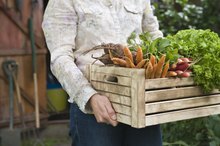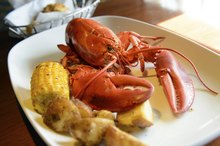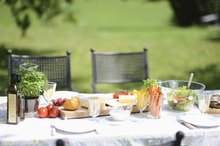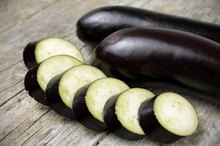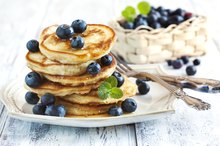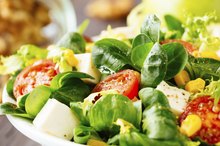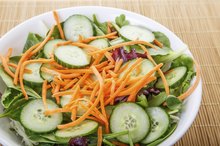What does fact checked mean?
At Healthfully, we strive to deliver objective content that is accurate and up-to-date. Our team periodically reviews articles in order to ensure content quality. The sources cited below consist of evidence from peer-reviewed journals, prominent medical organizations, academic associations, and government data.
- MedlinePlus: Uric Acid
- Office of Dietary Supplements: Vitamin C
- National Institute of Arthritis and Musculoskeletal and Skin Diseases: Questions and Answers About Gout
The information contained on this site is for informational purposes only, and should not be used as a substitute for the advice of a professional health care provider. Please check with the appropriate physician regarding health questions and concerns. Although we strive to deliver accurate and up-to-date information, no guarantee to that effect is made.
List of Foods That Reduce Uric Acid
A gout attack can be very painful. While there are a number of reasons why your uric acid levels may be elevated, making changes to your diet to reduce the amount in your blood may help prevent flare-ups. Consult your doctor to discuss uric acid in your diet.
If you are experiencing serious medical symptoms, seek emergency treatment immediately.
Gout and Uric Acid
Uric acid is a byproduct of purines, which are substances found in food. In most people, uric acid dissolves in the blood and is excreted in the urine. Some people produce too much uric acid or have a difficult time excreting it.
Part of the treatment for people with gout is to limit intake of foods that increase uric acid levels.
Having high blood levels of uric acid also increases your risk of kidney stones, according to the University of Pittsburgh Medical Center 2.
- Uric acid is a byproduct of purines, which are substances found in food.
- In most people, uric acid dissolves in the blood and is excreted in the urine.
Purines in Food
Which Vegetables Are Not Good for Uric Acid?
Learn More
Limiting your intake of foods high in purines helps reduce blood uric acid levels. If you're struggling to keep your gout from flaring up, you may need to avoid these foods. Red meat, other types of seafood and poultry also contain purines, and you should limit your intake to 3 ounces at mealtimes.
Foods to Include
Carbohydrates help your body get rid of uric acid, says UPMC, and should be the basis of your diet. That means more fruits and whole grains such as whole-wheat bread, oats, brown rice and whole-wheat pasta.
Round out your choices with plenty of vegetables, especially those rich in vitamin C such as peppers and broccoli, which may assist in reducing uric acid levels.
Also, choose low-fat or nonfat dairy foods, fat in food causes your kidneys to retain uric acid, according to UPMC.
- Carbohydrates help your body get rid of uric acid, says UPMC, and should be the basis of your diet.
- Round out your choices with plenty of vegetables, especially those rich in vitamin C such as peppers and broccoli, which may assist in reducing uric acid levels.
Additional Tips
List of Foods High in Uric Acid
Learn More
Make sure you drink plenty of water, 8 cups to 12 cups a day, to help prevent the formation of kidney stones. Upping your intake of water also assists in flushing out the uric acid from your body, helping to reduce levels. Also, if you're trying to lose weight, go slow. Losing weight too quickly may also increase the amount of uric acid in your blood.
- Make sure you drink plenty of water, 8 cups to 12 cups a day, to help prevent the formation of kidney stones.
- Upping your intake of water also assists in flushing out the uric acid from your body, helping to reduce levels.
Related Articles
References
- Patient: Gout Diet Sheet
- University of Pittsburgh Medical Center: Low-Purine Diet
- MedlinePlus: Uric Acid
- Office of Dietary Supplements: Vitamin C
- National Institute of Arthritis and Musculoskeletal and Skin Diseases: Questions and Answers About Gout
- Benn CL, Dua P, Gurrell R, et al. Physiology of hyperuricemia and urate-lowering treatments. Front Med (Lausanne). 2018;5:160. doi:10.3389/fmed.2018.00160
- George C, Minter DA. Hyperuricemia. [Updated 2019 Jun 4]. In: StatPearls [Internet]. Treasure Island (FL): StatPearls Publishing; 2019 Jan-.
- Ramirez-Sandoval JC, Madero M. Treatment of hyperuricemia in chronic kidney disease. Contrib Nephrol. 2018;192:135-146. doi: 10.1159/000484288
- Wilson FP, Berns JS. Tumor lysis syndrome: new challenges and recent advances. Adv Chronic Kidney Dis. 2014;21(1):18–26. doi:10.1053/j.ackd.2013.07.001
- American Association for Clinical Chemistry. Uric acid. Reviewed May 17, 2017.
- Khanna D, Fitzgerald JD, Khanna PP, et al. 2012 American College of Rheumatology guidelines for management of gout. Part 1: systematic nonpharmacologic and pharmacologic therapeutic approaches to hyperuricemia. Arthritis Care Res (Hoboken). 2012;64:1431–46. doi: 10.1002/acr.21772
- Coburn BW, Bendlin KA, Sayles H, et al. Target serum urate: Do gout patients know their goal? Arthritis Care Res (Hoboken). 2016;68(7):1028-35. doi:10.1002/acr.22785
- Wiederkehr MR, Moe OW. Uric acid nephrolithiasis: a systemic metabolic disorder. Clin Rev Bone Miner Metab. 2011;9(3-4):207–217. doi:10.1007/s12018-011-9106-6
Writer Bio
Jill Corleone is a registered dietitian and health coach who has been writing and lecturing on diet and health for more than 15 years. Her work has been featured on the Huffington Post, Diabetes Self-Management and in the book "Noninvasive Mechanical Ventilation," edited by John R. Bach, M.D. Corleone holds a Bachelor of Science in nutrition.
